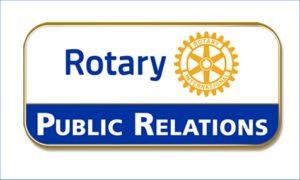100 Years of Steam
Speaker - Jim Muir

100 Years of Steam
IT all began with a ride aboard an old 'Pug' locomotive at Ardrossan Harbour more than 60 years ago which soon developed into a lifelong fascination with trains and the railways for one Saltcoats lad.
The birth of railways in the UK, the design and construction of the locomotives needed to power passenger and commercial trains was the subject of a fascinating talk by Jim Muir to members of the Rotary Club of Hunterston.
Jim, himself a Rotarian, provided an insight into how, and importantly who led the development of the industry."In the early days the fundamental difference was that the bosses of the main railway companies including London Midland Scottish (LMS), and the London, North East Railway (LNER) were engineers," he said.
"They knew exactly what types of locomotives were required to deliver success... today who do we have running the services? Certainly not engineers!
An avid collector of some of the country's most iconic and best known rolling stock, Jim gave an account of how, as a small boy in the early 1940s, he first became interested in railways, its trains and carriages being used after he was given his first train set and "somehow my parents obtained it, despite WW11 ranging at that time".
As a teenager Jim was watching a small locomotive and its carriages coming out of Ardrossan Harbour.
"I got to speaking with some of the crew and was given the opportunity every boy of his generation only dreamed of - a ride on the footplate. That's where my interest really started", he explained.
Later, as a married man Jim's fondness of trains was re-ignited and a life of "domestic bliss" began.
He explained: "My wife and I had gone away for the weekend to visit a friend and I decided to visit a model railway exhibition in Glasgow. Temptation led me to come home with my first locomotive and all the track and points I needed to build my first model rail layout. By the time my wife returned I was well into putting it all together. Domestic bliss.
"I learned a lot about railways, the architecture of its buildings and of course the history of some very famous locomotives."
Jim told how, when the London Midland Scottish (LMS) railway company came in to existence in 1923, it needed more powerful locomotives for the long run from Glasgow to London.
The outcome was the famous Royal Scot, designed by Henry Fowler. Fifty were built by the North British Locomotive Company in Glasgow.
Many were named after British Army regiments such as the Black Watch and other Highland regiments. Later, to celebrate the crowning of George VI, special 'Coronation' class trains were named after members of the Royal Family such as Queen Mary and the Duchess of Gloucester.
Today, Jim who, brought along a selection of his own personal collection of model trains collected over six decades - and which he still operates in his home - showed Hunterston Rotarians a model of the famous Stephenson's Rocket, sold by Hornby to celebrate the 150th anniversary of its first run.
"And it still works, powered by steam," he said proudly.
But his extensive collection of railway memorabilia also boasts Sir Nigel Gresley-designed world record holder for steam locomotives "Mallard" built in Doncaster and the more up-to-date British rail High Speed Train known as the HST 125 introduced in the 1970s
All of this following a chance encounter over 60 years ago.
"Sir Nigel became the chief mechanical engineering for the LNER... and, as they say, the rest is history," he concluded.
 Contact Alex Blair about this page:
Contact Alex Blair about this page:
Related pages...

Bobby Carruth, NFU, From Field to Plate
more Speaker on 30th Oct
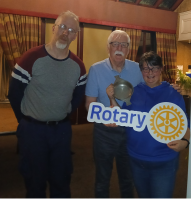
Community Quiz
more Fundraiser

Cris Thacker - Galileo Energy
more Speaker on 16th Oct
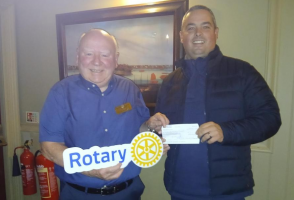
Saltcoats Christmas Carnival
more October Community Award
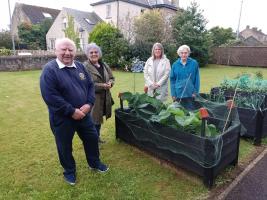
Headrigg Garden
more Vegetable Boxes
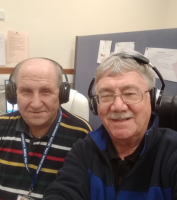
President Elect Hits the Airwaves
more 3TFM Interview
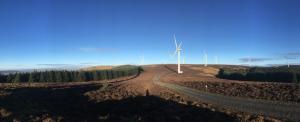
Community Quiz Night
more Galileo Sponsor
Community Quiz Night
more Galileo Sponsor
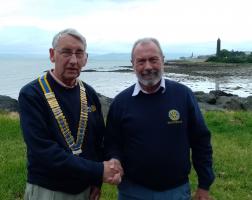
Club Handover 2024-2025
more Hunterston Presidential Handover
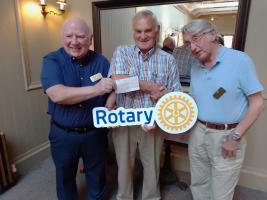
West Kilbride Yuletide Fund
more August Community Grant
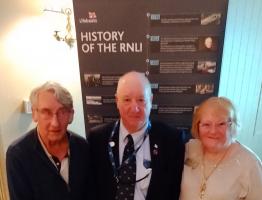
Largs RNLI
more Speaker Ron Copeland

Chief Reporter Neil Smith
more Speaker on 17th July
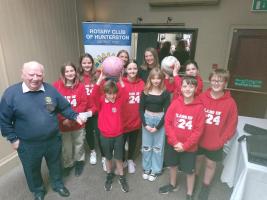
West Kilbride Primary School Netball Team
more WKPS team receives help
